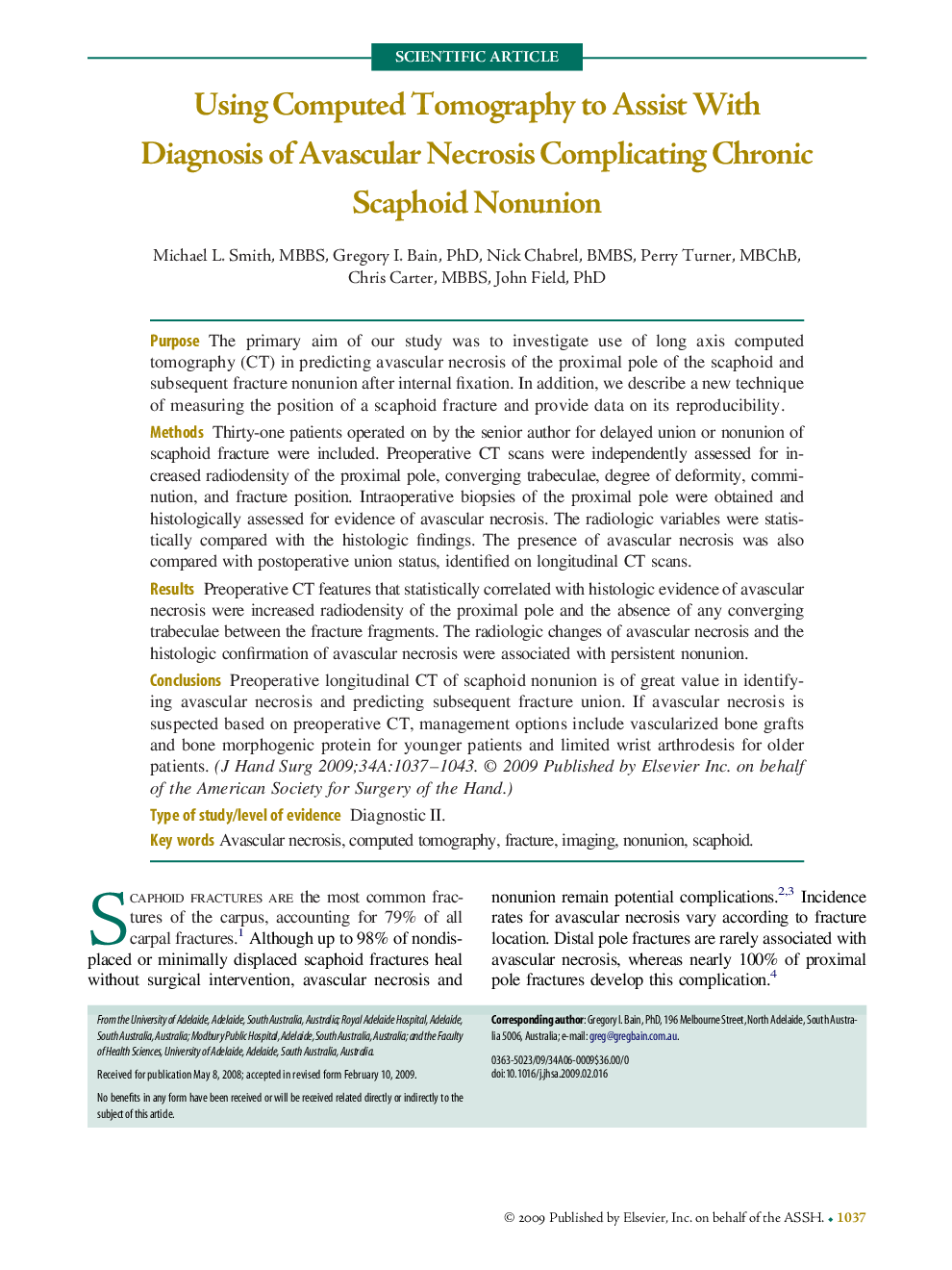| Article ID | Journal | Published Year | Pages | File Type |
|---|---|---|---|---|
| 4068496 | The Journal of Hand Surgery | 2009 | 7 Pages |
PurposeThe primary aim of our study was to investigate use of long axis computed tomography (CT) in predicting avascular necrosis of the proximal pole of the scaphoid and subsequent fracture nonunion after internal fixation. In addition, we describe a new technique of measuring the position of a scaphoid fracture and provide data on its reproducibility.MethodsThirty-one patients operated on by the senior author for delayed union or nonunion of scaphoid fracture were included. Preoperative CT scans were independently assessed for increased radiodensity of the proximal pole, converging trabeculae, degree of deformity, comminution, and fracture position. Intraoperative biopsies of the proximal pole were obtained and histologically assessed for evidence of avascular necrosis. The radiologic variables were statistically compared with the histologic findings. The presence of avascular necrosis was also compared with postoperative union status, identified on longitudinal CT scans.ResultsPreoperative CT features that statistically correlated with histologic evidence of avascular necrosis were increased radiodensity of the proximal pole and the absence of any converging trabeculae between the fracture fragments. The radiologic changes of avascular necrosis and the histologic confirmation of avascular necrosis were associated with persistent nonunion.ConclusionsPreoperative longitudinal CT of scaphoid nonunion is of great value in identifying avascular necrosis and predicting subsequent fracture union. If avascular necrosis is suspected based on preoperative CT, management options include vascularized bone grafts and bone morphogenic protein for younger patients and limited wrist arthrodesis for older patients.Type of study/level of evidenceDiagnostic II.
